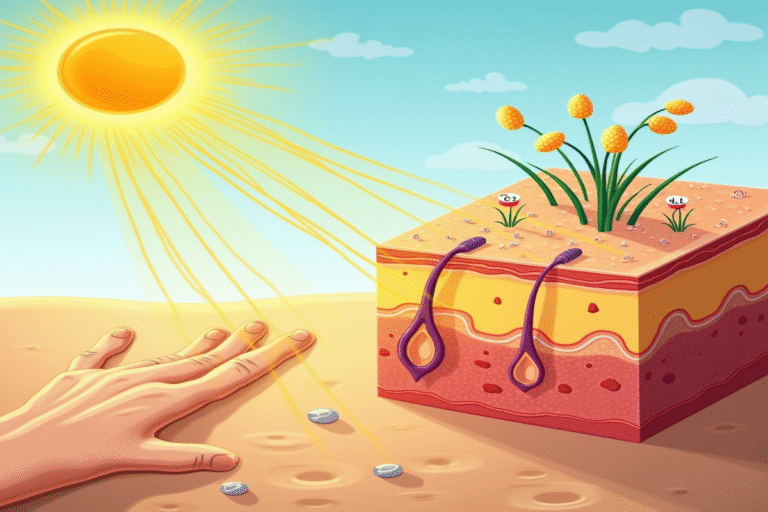When sunlight touches your skin, it triggers a fascinating biological process essential for health. This transformation begins with a cholesterol molecule called 7-dehydrocholesterol, which naturally exists in your skin cells.
When ultraviolet B (UVB) rays from sunlight reach your skin, they interact with this molecule, breaking one of its chemical bonds. This photochemical reaction converts 7-dehydrocholesterol into previtamin D3, which then changes, with the help of your skin’s warmth, into vitamin D3 (cholecalciferol).
The Journey Through Your Body
The newly formed vitamin D3 in your skin is not yet active. It must be processed further by your body. Vitamin D3 enters your bloodstream and binds to a transport protein, which carries it to your liver.
In the liver, enzymes add a hydroxyl group to vitamin D3, turning it into 25-hydroxyvitamin D (calcidiol). This is the main form of vitamin D found in your blood and is what doctors usually measure to assess your vitamin D levels.
Next, 25-hydroxyvitamin D travels to your kidneys, where another enzyme adds a second hydroxyl group, producing 1,25-dihydroxyvitamin D (calcitriol) – the active form your body can use.
Nature’s Brilliant Regulation
This process is tightly regulated. Your skin has a natural safety mechanism to prevent vitamin D toxicity from too much sun. When enough vitamin D3 is made, ultraviolet light breaks down the excess, stopping your body from producing too much.
Your skin tone also plays a vital role. Melanin, the pigment that gives skin its color, competes with 7-dehydrocholesterol for UV photons. This is why people with darker skin need more sunlight to make the same amount of vitamin D as those with lighter skin — an adaptation related to geographic ancestry and sun strength.
A Delicate Balance
The type of sunlight matters greatly. Only UVB rays (with wavelengths between 290 and 315 nanometers) can start vitamin D production. UVA rays, which make up most of the UV radiation reaching Earth, do not help make vitamin D and penetrate deeper, sometimes causing skin damage.
As humans moved away from the equator, our bodies adapted this vitamin D pathway to help absorb calcium — a mineral essential for bones, nerves, and many other functions.
This photochemical reaction on your skin shows how living things have evolved to use the world around them. Every time you step into the sunlight, you trigger an ancient biological pathway that links you directly to the energy of the sun.





